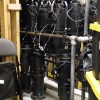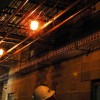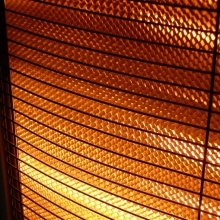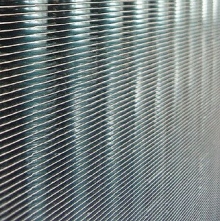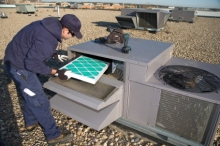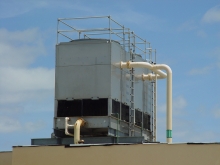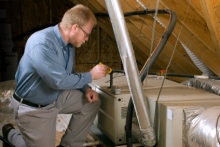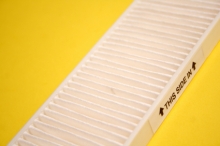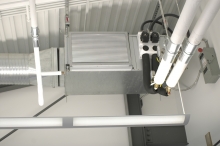Central Dimming Controls
Radiant Heating Units
Radiant heat refers to heat that emanates from a heated element or substance. Radiant heating systems do not rely on circulating heated air via ductwork or other means. Radiant heating units are manufactured assemblies designed to provide comfort heating through radiant heat transfer. Infrared rays are radiated from an electric or fuel-fired assembly until they are absorbed by objects -- floors, people, furniture, etc., which then transfer heat to the surrounding area.
Fan Coil Units
A fan-coil unit is simply an enclosure consisting of a fan and at least one coil. These units are available with chilled water coils and they may have hot water, steam and electric heating coils for added flexibility. The unit may be designed to be concealed or visible. In either case, the units have durable, heavy gauge steel construction.
Central HVAC Equipment
Central HVAC equipment falls into many categories, including thermal storage and air-to-air energy recovery equipment. Following is a list of equipment broken down by Master Format heading.
Packaged Compressor and Condenser Units
An air cooled condensing unit is an enclosure for one or multiple condenser fans, compressors, coils, piping, and controls. Its purpose is to provide cooling to a building via a central station air handling unit. Condensing units are the outdoor section of a split system (A split system is simply an HVAC air conditioning system in which the air handler and condensing units are separate pieces of equipment) and cools the refrigerant which is circled through its cooling coil.
Furnaces
A furnace is an enclosure through which air is either drawn or pushed, and it contains, at minimum, a method for filtering and heating the air. A furnace may also have a method of cooling the air (or removing heat from the air, thus leaving it cooler). Furnaces are commonly used heating and cooling devices.
Particulate Air Filtration
Particulates, which can include mold and spores, are implicated in many human illnesses. Particulate air filtration is simply the removal of intruding particles from the conditioned air steam.
Variable-Air-Volume Units
A variable-air-volume unit, or VAV box, as they are commonly called, is part of an air conditioning system. It is a device installed in the supply ductwork which regulates the volume of air being delivered to a zone. A zone is a defined space that is governed by a single thermostat or sensor, and for which there is a main supply duct that subdivides into as many ducts as are required to fully air condition the zone’s spaces. The device itself regulates the air passing through it by opening and closing a damper, and it can vary the quantity of air which passes through it. As the thermostat senses the need for more air conditioning, it signals the VAV to open the damper, and vice versa.

